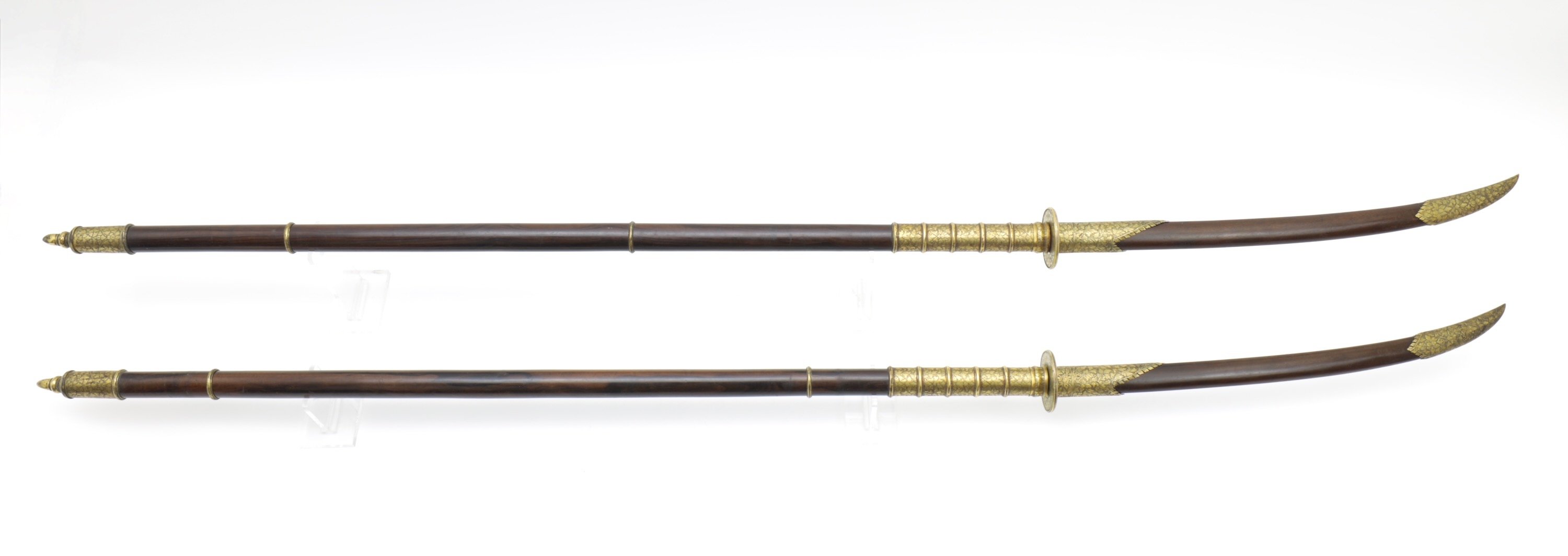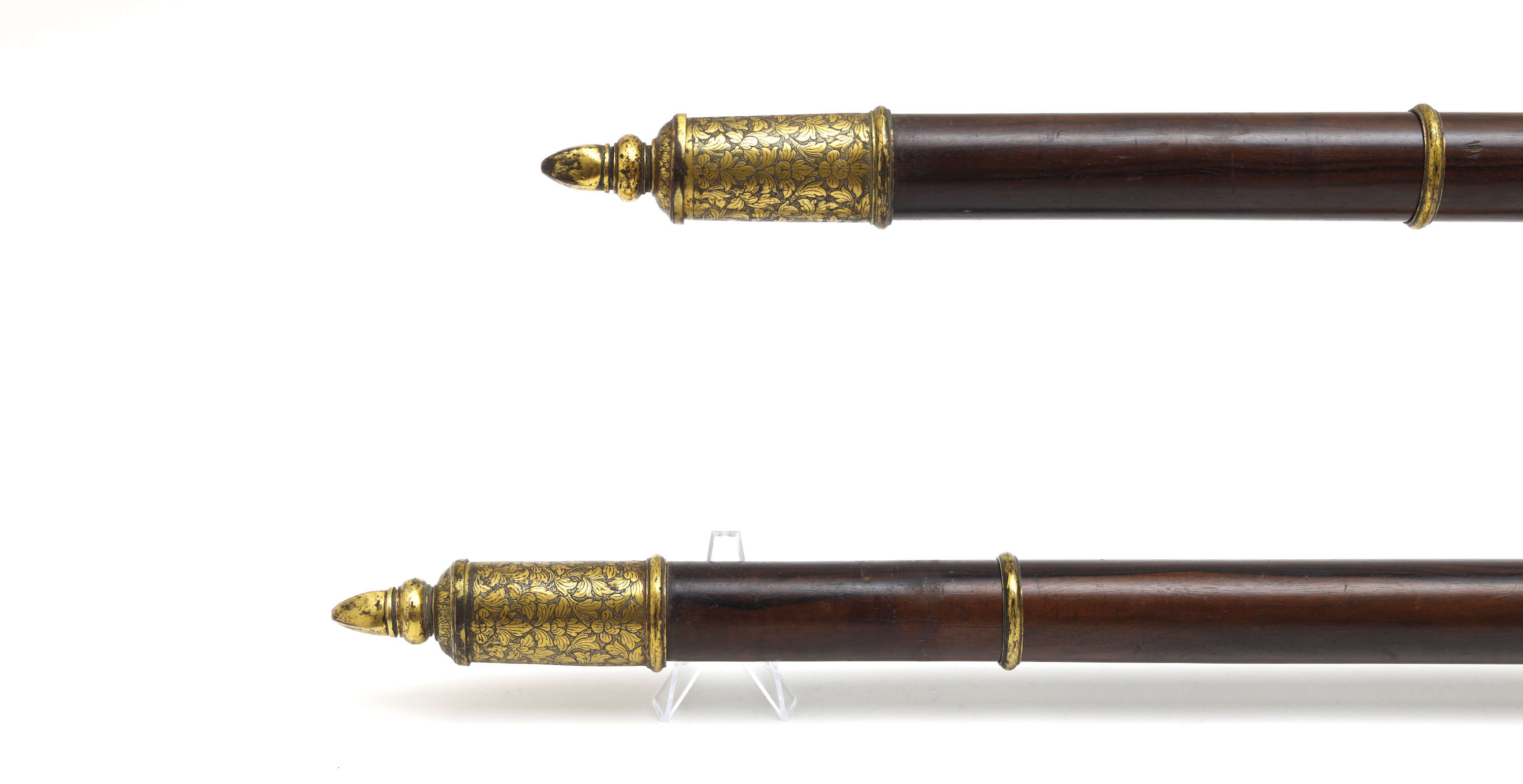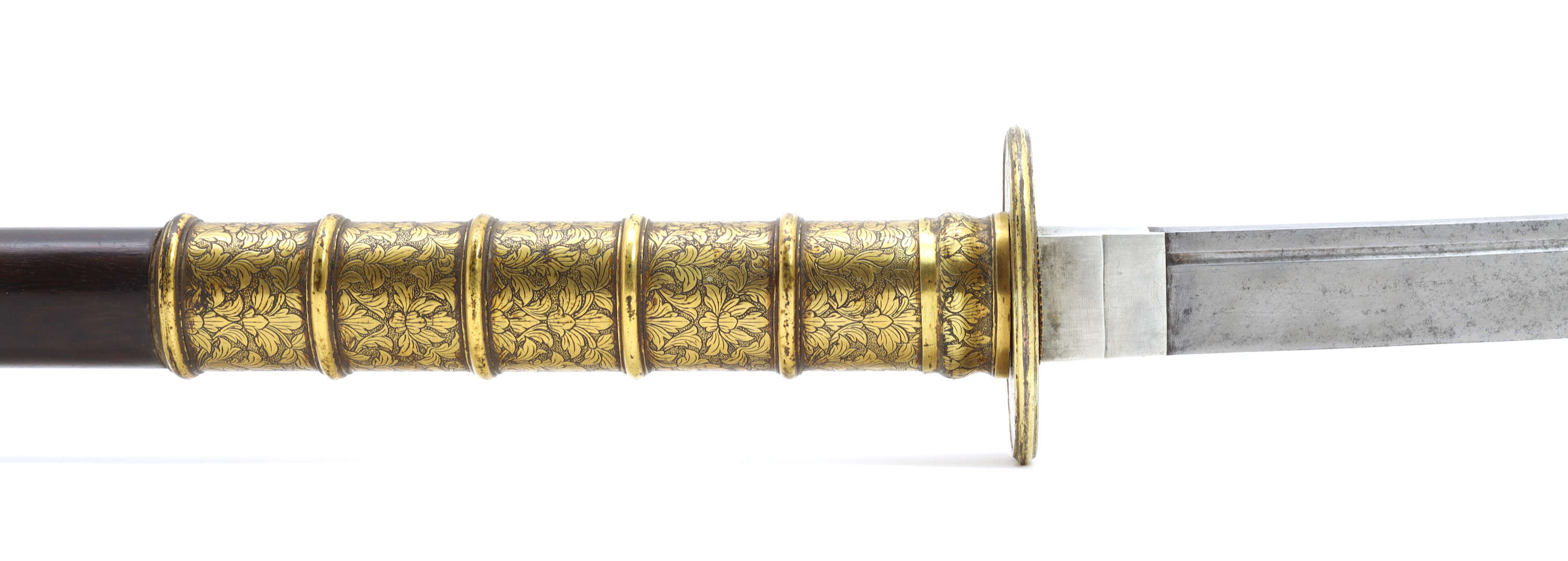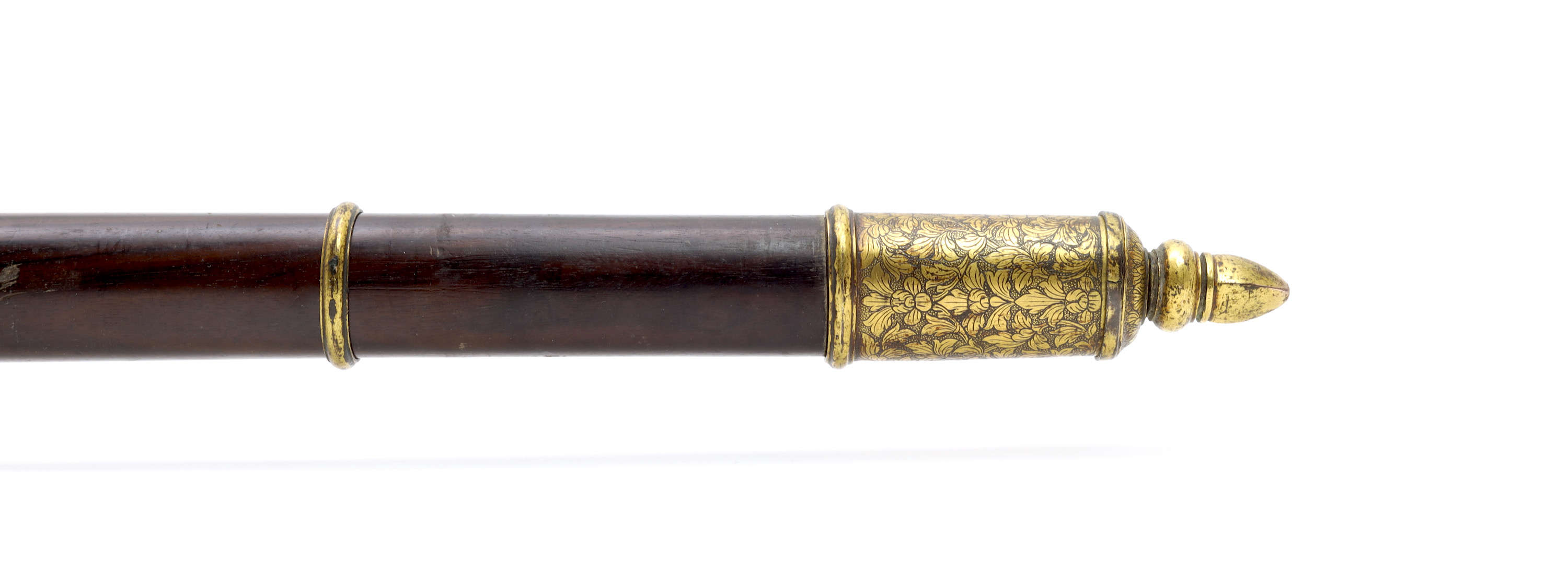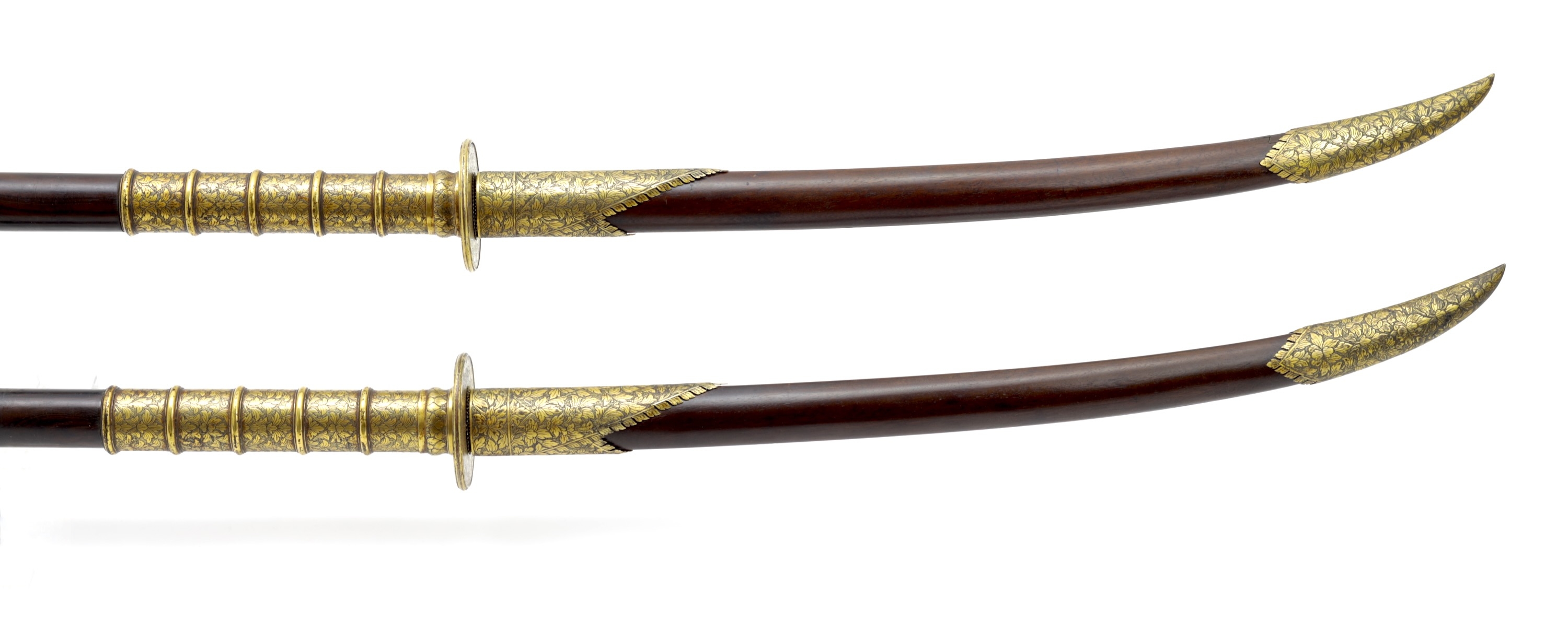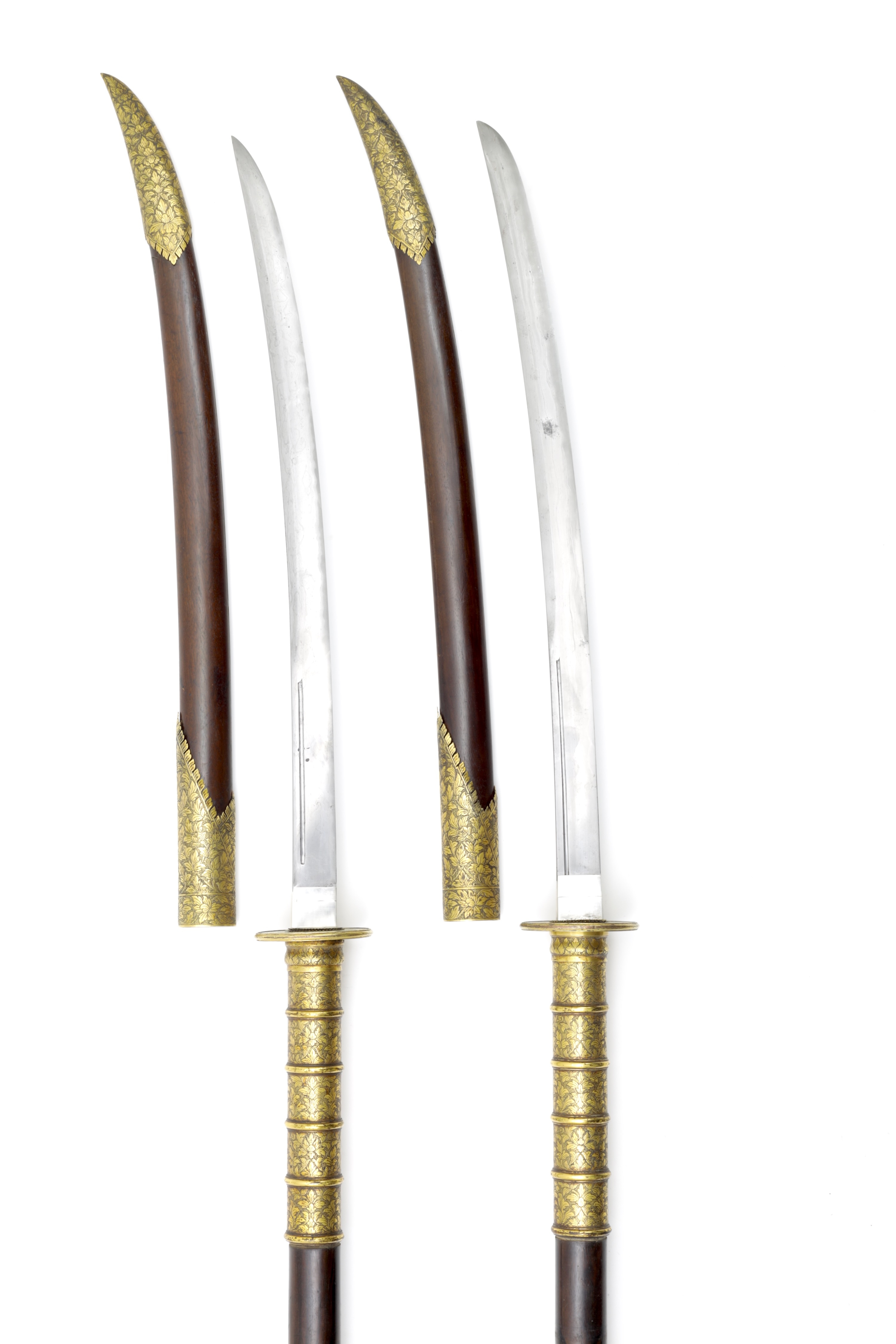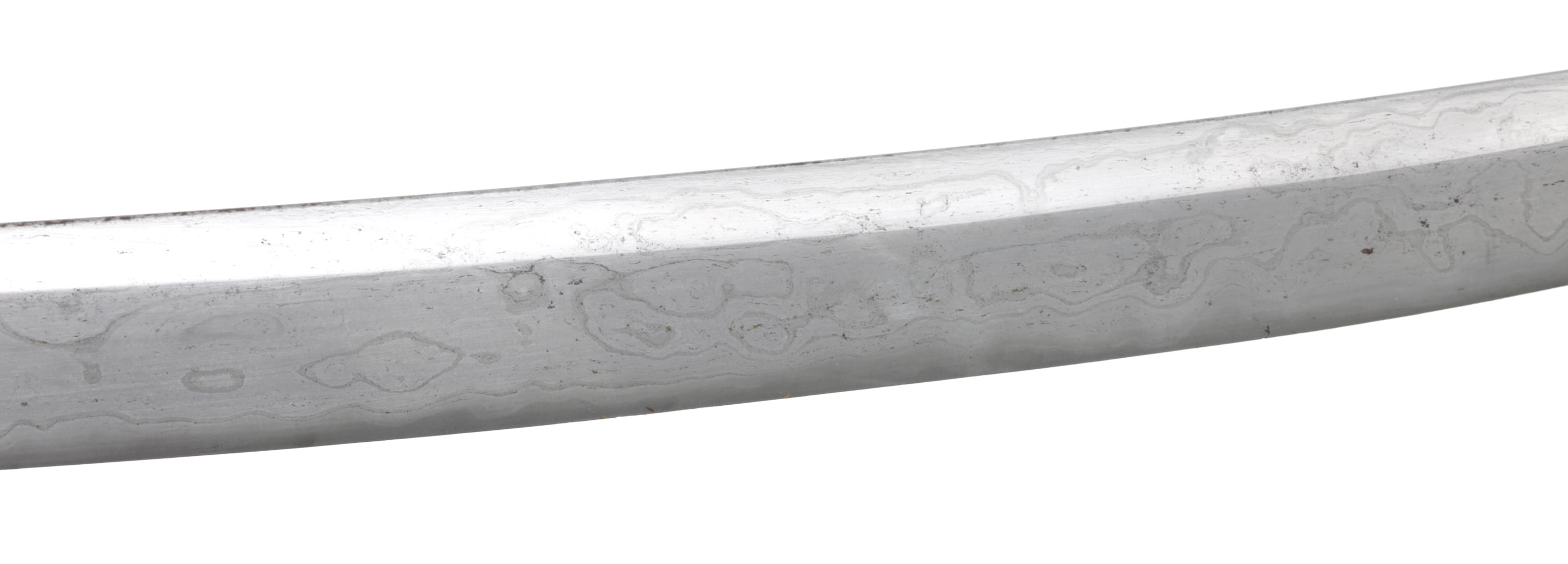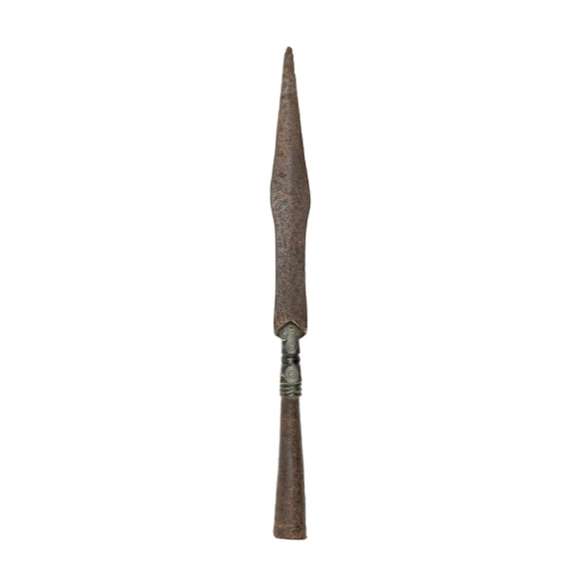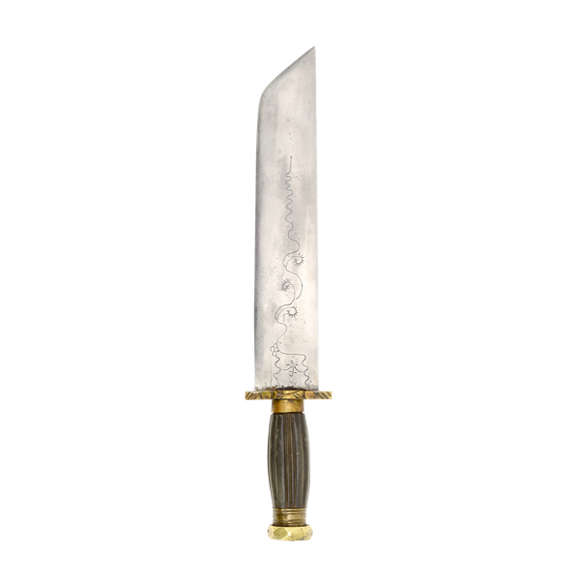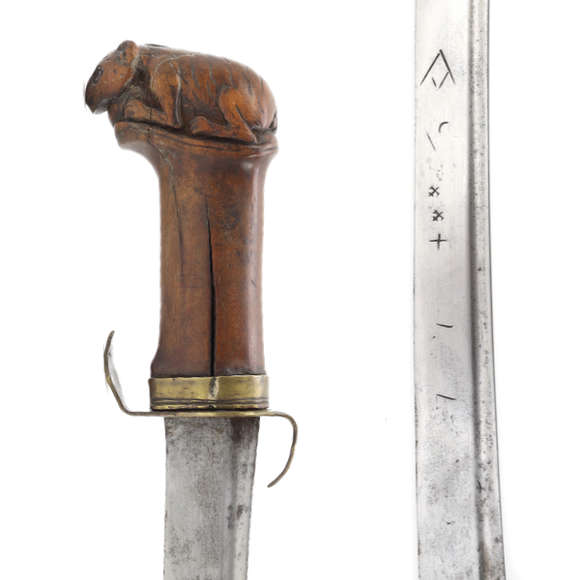Of classic shape, with a leaf-shaped blade on a socket, connected by a cast bronze base.
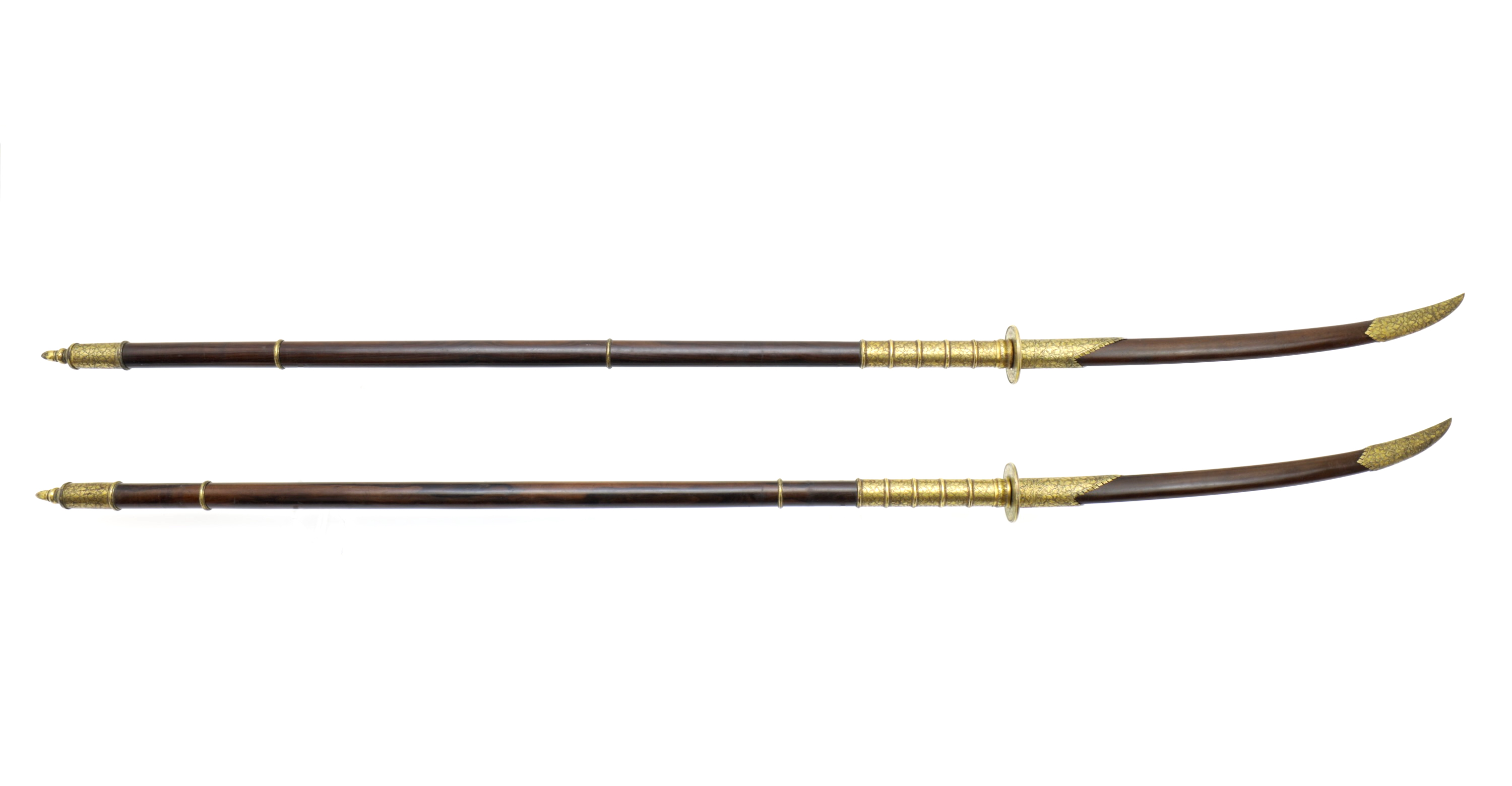
A: 170.5 cm
B: 170 cm
A: 52.5 cm
B: 52 cm
A: 1648 grams
B: 1668 grams
Iron, steel, gilt copper, wood
Thailand
Circa 1820s-1860s
From an American private collector
Description
A fine pair of Siamese royal pole-arms. Such weapons are called nĝāw (ง้าว ) in Thai. When royal, they are referred to as phra rāch nĝāw (พระราช ง้าว ) or phra s̄æng nĝāw (พระแสง ง้าว).1
Such arms are frequently seen depicted on the backs of royal war elephants, such as on this mural in the Ramakien gallery in the Temple of the Emerald Buddha on the royal palace grounds in Bangkok. The murals depict the ancient epic Ramayana, and this last version was done by order of Rama III who ruled from 1824 to 1851.
Blades
The sharp, fully functional blades are styled after Japanese naginata. They are forge folded, one with a straight grain pattern, and the other with a burl pattern. They have an inserted high-carbon edge and signs of differential heat treatment. They have silver collar pieces, (habaki in Japanese). One of the blades had been coarsely cleaned by a previous owner, the other was preserved in a very good state, both now in recent polish to show off the details in their steel.
The naginata shape is a remnant of Japanese presence in Thailand from the late 15th through the first half of the 16th century. The immigrants were mostly refugees who were fleeing the civil war or prosecution for having turned to Christianity. Among them were many ronin samurai who served in the Thai army and even the King's Royal Guard until 1688.2
Mountings
The pair comes in a full set of en-suite mounts in heavy gilt copper consisting of a scabbard endpiece, mouthpiece, guard, ferrule, sleeve for foreshaft, butt cap, and butt spike for each piece. The decoration of all mounts, except the guards, consists of engravings of cotton rosemallow flower designs called phuttan.3
Guards are engraved with designs of two Chinese-style pole arms with banners attached, with sprays of floral decor, over a punched background.
Gold is almost 100% intact on all pieces, the staining we see rests on top of the gold and can be removed. Some losses to the flaming borders of the scabbard mounts were professionally repaired.
Shafts & scabbards
The shafts are made of dense, dark hardwood. Slightly oval in cross-section, polished to a high gloss. The scabbards are each made of two halves of wood, each with a gilt-copper mouth and endpiece with engraved phuttan decoration.
Comparable examples
Extremely rare on the market, the only comparable pole arms that come to mind are those preserved in racks in the Royal Palace in Bangkok. Unfortunately, these are displayed without any context.
Royal Thai presentation swords
A number of swords have been presented to King Mongkut to dignitaries worldwide. In 1856 he presented a sword to America as part of the Harris Treaty Gifts. It is now held in the Smithsonian, with accession number E101-0. The work is more simplistic and cruder in execution than on our pole arms.
A hint to dating our set is found in the style and workmanship of the guards. The shape of the rim and the decor consisting of punched dots are identical to the guard seen on a Thai royal presentation sword that was presented to Emperor Napoleon III on June 27, 1861, held in the Palace of Fontainebleau since. Accession number F1534C.4

Top; the sword presented to Napoleon III by King Rama IV in 1861.
Bottom; one of our pole arms (left) compared to the guard of the above sword.
Notice the shaping of the rim in particular.
Another sword, quite similar, was sent by King Rama IV to U.S. President James Buchanan, also in 1861. By the time it arrived, Abraham Lincoln had won the elections and received it. This guard is less similar, it has a separate rim and applied decor. The photos do give a better view of the engraving and punched work, which is notably coarser than on our set.
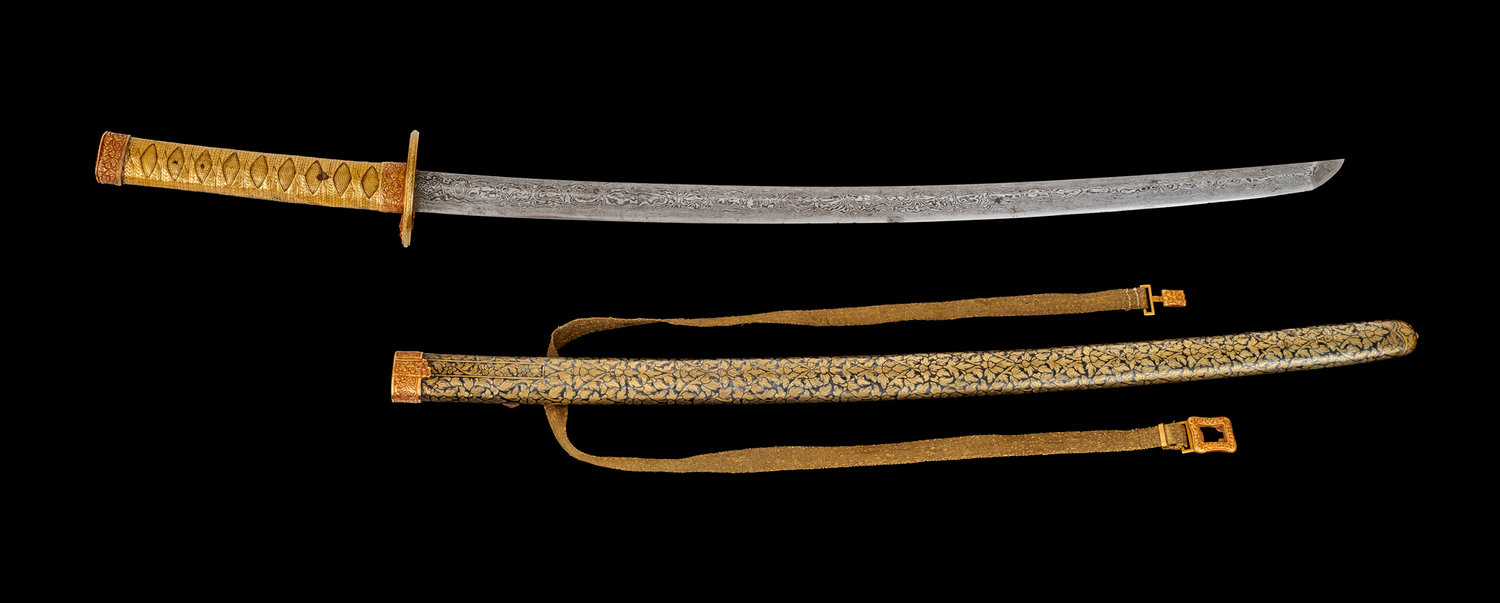
The Thai sword of Abraham Lincoln.
National Archives, accession number 5923141.
Also, notice the identical nature of the decor on both swords and our pole arms, both with the phuttan designs associated with Thai royal paraphernalia.
Gifts to Queen Victoria, 1857
In November 1857 a Siamese delegation visited the court of Queen Victoria, they were received at Windsor Castle where they exchanged a number of gifts. Among these, a pole arm of the type also presented in this article. The weapons were described in the Illustrated London News of 28 November 1857:

"...and two species of Arms, with deadly-looking blades: these
are all very beautifully ornamented; and, in point of design, may vie
with many of the choice productions of Europe."
Conclusion
An extremely rare matched set of Thai pole arms that were used by the palace guards of the Siamese royal household. Despite the lavish decor, the blades are not of a ceremonial nature and are made for actual use.
Given the above comparables, it is safe to assume they date at least from the time of Rama IV, but the better execution of the work may point to a slightly earlier dating as well.
References
1. SEAlang Library Thai Dictionary.
2. Vu Duc Liem; Japanese Military Involvement in Ayutthaya, 1600-1630.
3. Paul Bromberg; Thai Silver and Nielloware. River Books, 2019.
4. A sword in Japanese style, gifted by King Rama IV, was reported stolen from the museum in 2014. It appears there were at least two, it is unclear which one was stolen.
